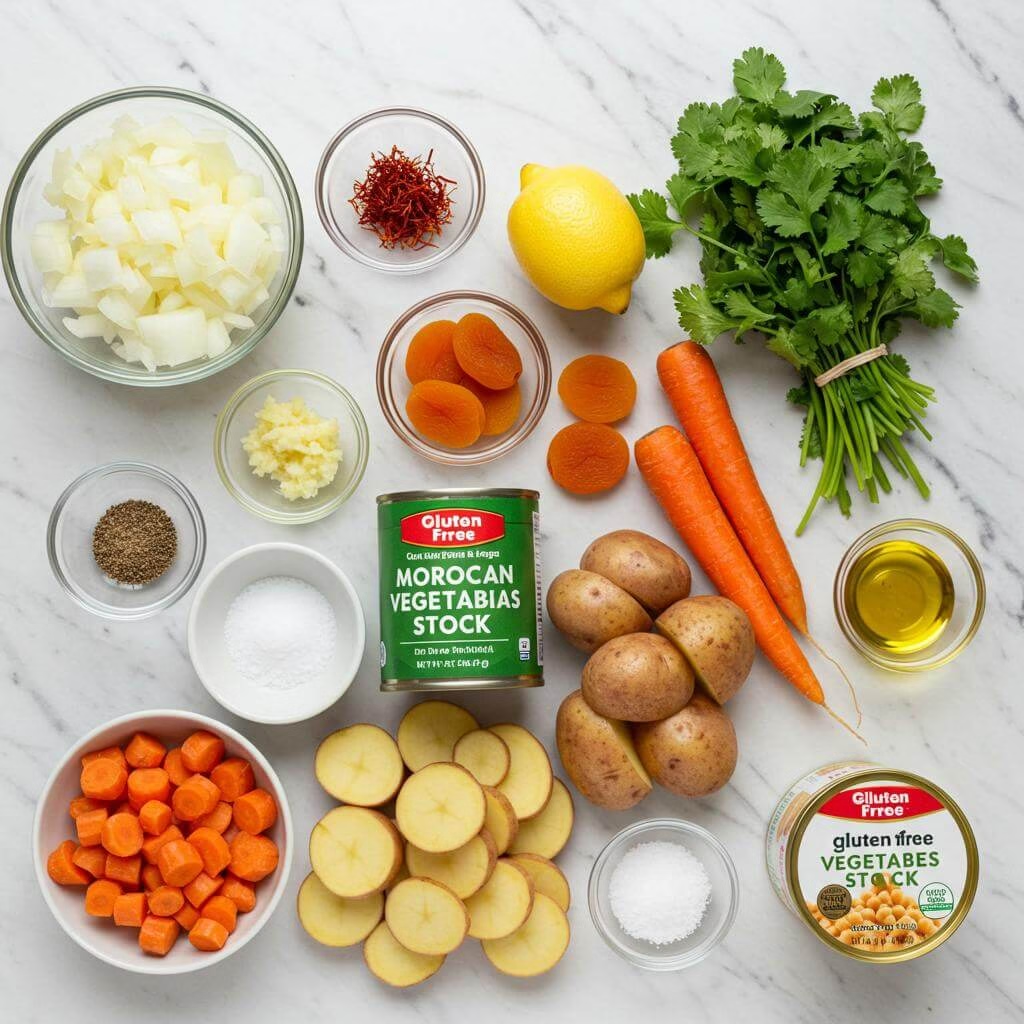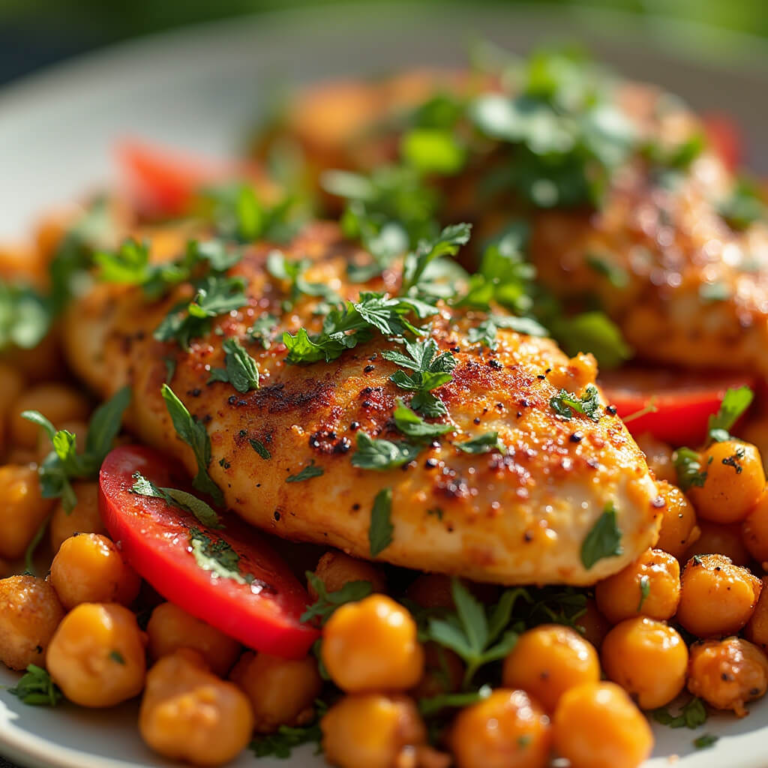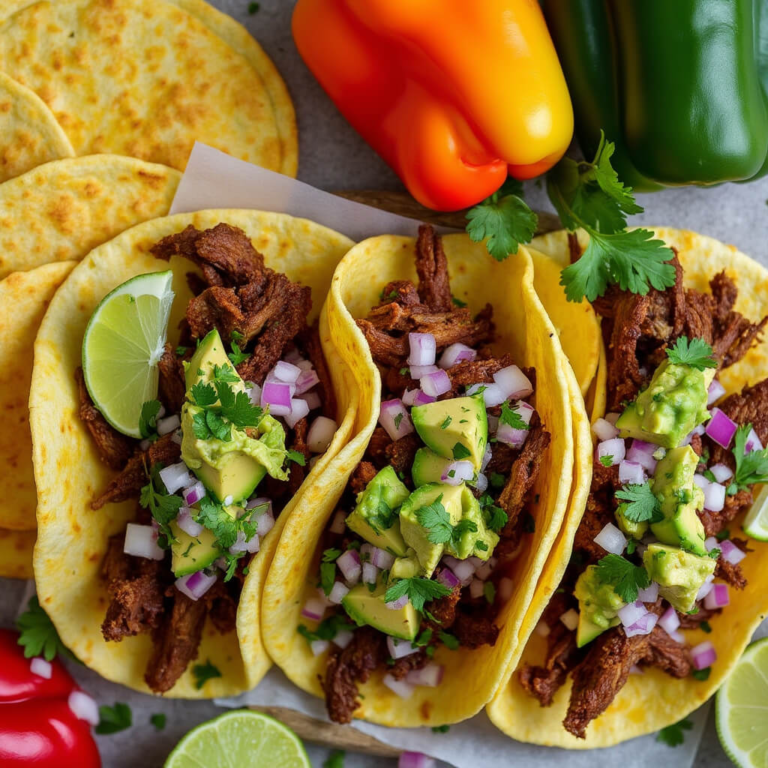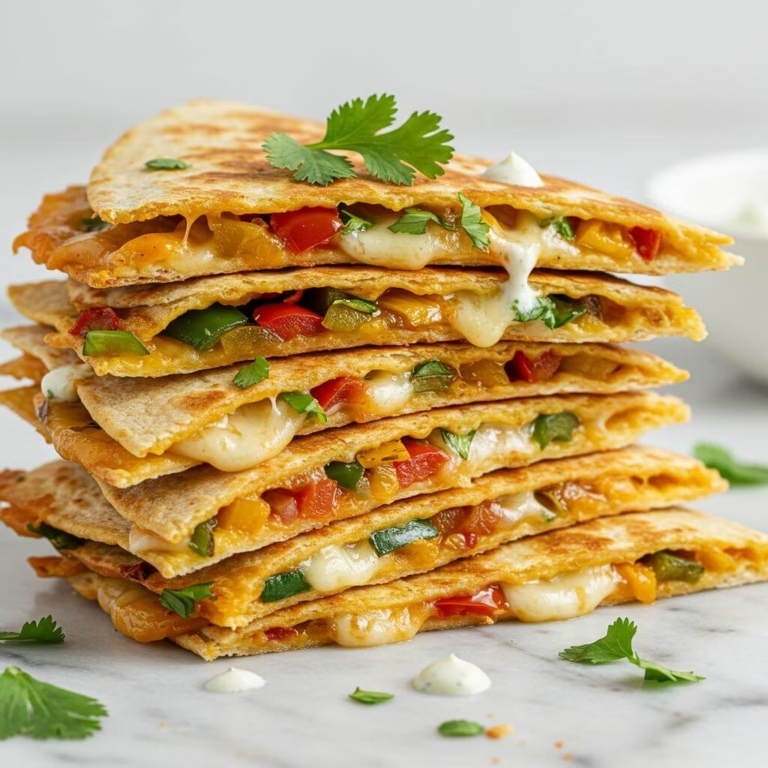
Moroccan Chickpea Tagine: Your New Favorite Gluten-Free Vegan Comfort Food!
Hello, wonderful food explorers, and welcome! If you’re anything like us here at Be Gluten Free, you’re always on the lookout for recipes that are bursting with flavor, incredibly satisfying, and of course, joyfully gluten-free. Well, prepare to be delighted, because today we’re sharing a dish that ticks all those boxes and more: our vibrant and aromatic Moroccan chickpea tagine. This isn’t just a meal; it’s an experience – a beautiful tapestry of sweet, savory, and warmly spiced notes that will transport your taste buds and warm you from the inside out. It’s the ultimate vegan comfort food that just happens to be wonderfully gluten-free!
Crafting exciting, globally-inspired dishes without gluten can sometimes feel like a challenge, but this Moroccan chickpea tagine is here to prove how deliciously simple it can be. We’ve designed this recipe with our gluten-free community in mind, ensuring every spoonful is packed with incredible taste without any of the gluten. Imagine tender chickpeas mingling with sweet, chewy apricots, crunchy toasted almonds, all simmered in a rich, fragrant sauce seasoned with traditional spices like cumin, ginger, and cinnamon. It’s a delightful combination that makes this vegan tagine a standout star. If you’re a fan of hearty, plant-based stews full of aromatic spices, you might also fall in love with our equally comforting Vegan Mushroom Stroganoff or our rich and flavorful Dal Makhani.
One of the best things about this Moroccan chickpea tagine is its wonderful simplicity and how it brings such exotic flavors to your table with minimal fuss. We’ve opted for convenient canned chickpeas to make prep even quicker, and the technique of roasting the vegetables separately (as detailed in the recipe below!) really intensifies their sweetness and adds a lovely texture that complements the stew. It’s perfect for a cozy weeknight dinner yet special enough for when you have guests. We love serving it with fluffy quinoa to keep it entirely gluten-free (a fantastic alternative to traditional couscous). Or, for an extra treat, why not pair it with some of our homemade Gluten-Free Flatbread to soak up every last bit of that incredible sauce? This recipe is all about embracing the joy of cooking and eating well, even with dietary considerations. We promise, this easy Moroccan chickpea tagine will quickly become a beloved favorite in your gluten-free kitchen!
Why This Moroccan Chickpea Tagine Recipe is a Gluten-Free Masterpiece
Preparing delicious, satisfying gluten-free meals can sometimes feel like navigating a culinary maze, but this **moroccan chickpea tagine** recipe is a shining example of how incredible gluten-free cooking can be! Unlike baking, where gluten plays a crucial structural role, this tagine thrives precisely *because* it doesn’t rely on gluten for its success. It’s a naturally gluten-free dish where every ingredient contributes meaningfully to flavor and texture, making it exceptionally well-suited for a gluten-free lifestyle without compromise.
At its heart, a stew or tagine is a celebration of slow-cooked ingredients melding together in a flavorful liquid base. This specific **moroccan chickpea tagine** leverages the power of aromatic spices and hearty plant-based components to create a rich, complex dish. There’s no need for tricky gluten-free flour blends, starches, or binders within the tagine itself because the desired texture isn’t a springy crumb or chewy crust. Instead, the texture comes from the beautiful interplay of tender chickpeas, rehydrated sweet apricots, softened onions and garlic, and the slight thickening that naturally occurs as the vegetable stock simmers and reduces.
Let’s dive into how the star ingredients in this **moroccan chickpea tagine** contribute to its perfect functionality in a gluten-free context:
* **Chickpeas:** These legumes are a powerhouse in this vegan and gluten-free tagine. They provide substantial body, protein, and a delightful, slightly firm texture that holds up wonderfully during simmering. Unlike some gluten-free ingredients that can become mushy, chickpeas maintain their integrity, absorbing the fragrant spices and creating a satisfyingly hearty base.
* **Dried Apricots:** As they simmer in the tagine’s liquid, the dried apricots plump up, releasing their natural sweetness and a subtle tang. This creates a delightful sweet-and-savory dynamic classic to Moroccan cuisine. Importantly for texture, the rehydrated apricots offer a soft, chewy contrast to the other ingredients, adding layers of interest without needing any gluten-based structure.
* **The Aromatic Spice Blend:** Saffron, ginger, cumin, and cinnamon are the soul of this **moroccan chickpea tagine**. These ground spices infuse the entire dish with warmth, depth, and that characteristic North African perfume. Since flavor is paramount and entirely separate from gluten, this recipe shines by focusing intensely on building layers of aromatic flavor naturally. The spices coat the chickpeas and vegetables, ensuring every bite is packed with taste.
* **Roasted Root Vegetables:** The technique of roasting the carrots and potatoes separately is a genius move for texture and flavor, especially in a gluten-free application. Roasting caramelizes the natural sugars in the vegetables, intensifying their flavor far more than boiling would. It also provides a slight crispness or char on the edges, offering a pleasing textural contrast to the softer tagine base. This method relies purely on heat and oil, making it inherently gluten-free and adding another dimension that enhances the overall dish.
* **Toasted Almonds:** The final flourish of toasted slivered almonds isn’t just for garnish; it’s a critical textural component. Nuts are naturally gluten-free and provide a much-needed crunch that complements the soft chickpeas and vegetables. Toasting enhances their nutty flavor, adding another layer to the dish’s complexity.
While the recipe notes that traditional couscous is served on the side and is not gluten-free, it helpfully suggests quinoa as a perfect gluten-free alternative. Quinoa works beautifully here because, when cooked, it has a similar granular texture to couscous, serving as an excellent bed to soak up the rich, aromatic sauce of the **moroccan chickpea tagine**. Quinoa is also naturally gluten-free and adds a nutritional boost. This flexibility in the side dish makes the entire meal easily adaptable and fully compliant with a gluten-free diet.
In essence, this **moroccan chickpea tagine** works so well for a gluten-free lifestyle because it leverages the inherent strengths of whole, naturally gluten-free ingredients and cooking methods like simmering and roasting. There’s no need to mimic gluten; the recipe creates a deeply satisfying and flavorful experience by focusing on the quality and interaction of its naturally compliant components. It’s a testament to how vibrant and fulfilling gluten-free cooking can be when you embrace ingredients for what they are, creating a truly memorable **moroccan chickpea tagine**.
Tired of Boring Gluten-Free Breakfasts?
Imagine starting every day with a delicious, easy, and exciting gluten-free and dairy-free breakfast! Unlock 33 fresh ideas that will transform your mornings.
Get Your FREE Breakfast Ebook Now!(No credit card required. Instant download.)
Ingredients
For the Tagine:
- 3 Tablespoons olive oil: A heart-healthy fat source that helps build flavor and sauté the base ingredients. You can find quality olive oil for cooking.
- 2 medium yellow onions, minced: Forms the aromatic foundation of the stew.
- 2 garlic cloves, minced: Adds essential pungent depth to the flavor profile.
- 1 pinch saffron, freshly ground: Provides unique color, aroma, and subtle flavor, characteristic of Moroccan cuisine. Saffron is naturally gluten-free. Find saffron threads for authentic flavor.
- 1 teaspoon ground ginger: Adds warmth and a slightly sweet, pungent spice.
- 1 teaspoon ground cumin: Earthy, warm, and essential to Moroccan flavors.
- 1 teaspoon ground cinnamon: Brings sweetness and warmth, pairing beautifully with the dried apricots in this moroccan chickpea tagine.
- 12 dried apricots, pitted and cut in half: These sweet jewels soften during simmering, providing a delightful contrast to the savory spices – a hallmark of many great moroccan chickpea tagine recipes. Ensure they are just dried apricots with no added gluten ingredients.
- 1 medium lemon, juice: Brightens the flavors and adds a crucial touch of acidity to balance the sweetness.
- 2 Tablespoons agave syrup*: Provides sweetness. *Note: The recipe mentions honey as a non-vegan alternative, but for this vegan moroccan chickpea tagine, agave is used.
- 1 small handful fresh cilantro, chopped: Adds freshness and a bright, herbaceous note at the end.
- 1 1/4 cup (300 ml) vegetable stock: The liquid base for the stew. Ensure you use a certified gluten-free vegetable stock to keep the entire dish safe for a gluten-free diet.
- 1 can 15 oz (425g) chickpeas, drained: The star protein source in this vegan moroccan chickpea tagine. Chickpeas are naturally gluten-free and incredibly versatile.
- 6 Tablespoons slivered almonds, slightly toasted: Adds a lovely crunch and nutty depth. Almonds are naturally gluten-free. Locate slivered almonds for ease.
- Salt and pepper: To season and enhance all the flavors.
For the Roasted Veggies (Gluten-Free Side):
- 1.1 lb (500g) mixed carrots (orange, purple, white), peeled and roughly chopped: Root vegetables that roast beautifully, offering sweetness and texture.
- 2–3 medium potatoes, peeled and cut into quarters: Another starchy root vegetable that becomes tender and slightly crispy when roasted.
- 1 Tablespoon olive oil: To coat the vegetables for roasting.
- Salt and pepper: To season the roasted vegetables.
For the Couscous (NOT GLUTEN-FREE)**:
- 2 cups (400g) uncooked couscous: (Important Note: Couscous is traditionally made from wheat and is **NOT** gluten-free. If you have celiac disease or gluten sensitivity, **DO NOT** use this part of the recipe. Use the suggested gluten-free alternative below.)
- 2 teaspoons ground curry: Adds aromatic spice to the couscous base.
- 1 teaspoon ground cinnamon: Complements the tagine spices.
- 1 pinch ground cayenne pepper: Adds a touch of heat.
- 2 cups (50 cl) water: For cooking the couscous.
- 1 pinch salt: To season the couscous.
- 1 Tablespoons (15g) butter: Adds richness to the couscous. (Note: For a vegan side, use a plant-based butter alternative).
Nutritional Information & Gluten-Free Benefits
This Moroccan chickpea tagine is a fantastic choice for anyone following a gluten-free diet, especially those seeking delicious and satisfying plant-based meals. The recipe is naturally free from gluten-containing grains like wheat, barley, and rye, making it safe for individuals with celiac disease or non-celiac gluten sensitivity.
Beyond being gluten-free, this moroccan chickpea tagine is packed with nutrients. Chickpeas provide a substantial amount of plant-based protein and dietary fiber, which are crucial for satiety, digestive health, and blood sugar management. The vibrant array of vegetables (onions, garlic, carrots, potatoes) offers a wide spectrum of vitamins, minerals, and antioxidants. Dried apricots contribute natural sweetness along with fiber and potassium. Healthy fats from olive oil and almonds provide essential fatty acids and aid in nutrient absorption, while the generous use of spices like ginger, cumin, cinnamon, and saffron not only imparts incredible flavor but also brings potential anti-inflammatory and antioxidant properties.
Serving this moroccan chickpea tagine with a gluten-free side like quinoa (as suggested) further boosts the protein and fiber content, creating a complete and highly nourishing meal that supports overall well-being on a gluten-free journey.
Substitutions, Variations & Additional Tips
One of the joys of cooking tagine is its flexibility! Once you have the core spices and base, you can easily adapt this delicious moroccan chickpea tagine to your liking and dietary needs.
Gluten-Free Side Alternatives:
- Quinoa: As suggested in the recipe notes, quinoa is an excellent gluten-free substitute for couscous. Cook 1 cup quinoa with 2 cups gluten-free vegetable stock (or water) and the spices mentioned for the couscous section (curry, cinnamon, cayenne, salt). This adds more protein and fiber.
- Rice: Brown rice or basmati rice also pair wonderfully with the flavors of this moroccan chickpea tagine. Cook according to package directions using water or gluten-free vegetable stock.
- Millet or Sorghum: Explore other gluten-free grains like millet or sorghum cooked simply as a base.
Ingredient Substitutions:
- Dried Fruit: Instead of just apricots, try using dried dates (Medjool dates work well), raisins, or a mix of your favorite dried fruits.
- Nuts: If you don’t have slivered almonds, chopped whole almonds, walnuts, or pecans would also provide a lovely texture. For a nut-free version, try toasted pumpkin seeds or sunflower seeds added at the end.
- Sweetener: While agave is used here, maple syrup or date syrup would also work as vegan, gluten-free sweeteners.
- Chickpeas: Other legumes like cannellini beans or butter beans could work, although chickpeas are traditional and hold their shape well in this moroccan chickpea tagine.
- Vegetable Stock: Always ensure your vegetable stock is certified gluten-free. You can also use water, but stock adds more depth of flavor.
Roasted Vegetable Variations:
- Feel free to use other root vegetables like sweet potatoes, parsnips, turnips, or even add chunks of bell peppers, zucchini, or eggplant to the roasting pan. Adjust roasting time depending on the vegetables used.
- Add spices like smoked paprika, garlic powder, or dried herbs (like thyme or rosemary) to your roasting vegetables for extra flavor.
Flavor Variations:
- Spicy Kick: Add a pinch of red pepper flakes or a finely diced chili pepper along with the garlic and spices for extra heat.
- Smokiness: A pinch of smoked paprika can add a lovely smoky undertone to the tagine.
- Herbs: While cilantro is suggested, fresh parsley or a blend of cilantro and parsley can also be used as a garnish.
- Lemon: For a brighter flavor, add a strip of preserved lemon rind (ensure it’s gluten-free and rinse well) when simmering the tagine.
Tips for Success:
- Don’t rush sautéing the onions; cooking them until soft and slightly golden builds a great flavor base for your moroccan chickpea tagine.
- Toast the nuts gently and watch them closely as they can burn quickly!
- If using canned chickpeas, add them towards the end of the simmering process as they are already cooked, just needing time to absorb the flavors.
- This moroccan chickpea tagine often tastes even better the next day once the flavors have had more time to meld. It stores well in the refrigerator.
Essential Equipment for This Recipe
To prepare this delicious recipe, you’ll need the following kitchen tools:
- Mixing Bowls – A set of good quality mixing bowls is crucial for preparing various components of the recipe.
Find Mixing Bowls on Amazon - Measuring Cups and Spoons – Precise measurements are key for baking success.
Find Measuring Cups and Spoons on Amazon - Baking Sheets – Ensure even baking with a sturdy baking sheet.
Find Baking Sheets on Amazon - Whisks – A whisk is essential for aerating mixtures and combining ingredients smoothly.
Find Whisks on Amazon - Spatulas – Perfect for folding ingredients and scraping bowls clean.
Find Spatulas on Amazon - Food Processors – Save time and effort with a food processor for chopping and pureeing.
Find Food Processors on Amazon - Saucepans – For melting or cooking ingredients on the stovetop.
Find Saucepans on Amazon - Chef’s Knives – A sharp chef’s knife is essential for prepping ingredients efficiently.
Find Chef’s Knives on Amazon - Cutting Boards – Protect your countertops while you chop and prepare ingredients.
Find Cutting Boards on Amazon

- Begin by preparing the aromatic base for your delightful moroccan chickpea tagine. Heat 3 tablespoons of good quality olive oil in a large, heavy-bottomed pot or Dutch oven over medium heat. Once the oil is hot but not smoking, add the 2 medium minced yellow onions. Sauté them gently, stirring occasionally, until they become soft and translucent. This usually takes about 10 minutes. Be patient during this step, as caramelizing the onions slightly builds a wonderful foundation of flavor for the stew.
- Next, introduce the fragrant spices and other key ingredients. Add the 2 minced garlic cloves, 1 pinch of freshly ground saffron, 1 teaspoon of ground ginger, 1 teaspoon of ground cumin, and 1 teaspoon of ground cinnamon to the pot. Stir continuously for just about one minute until the spices become fragrant and release their aromas. Be careful not to let them burn. Immediately after, add the 12 pitted dried apricots (cut in half), the juice from 1 medium lemon, 2 tablespoons of agave syrup (or use honey if you don’t need it to be strictly vegan, though agave keeps it vegan), and half of the small handful of chopped fresh cilantro. Pour in the 1 1/4 cup (300ml) of vegetable stock. Bring the mixture to a gentle simmer, then reduce the heat to low, cover the pot, and let it cook for about 15 minutes. The goal is for the liquid to be almost completely absorbed, creating a rich, slightly thickened sauce around the apricots and onions.
- Finish the main moroccan chickpea tagine by adding the final components. Stir in the drained 15 oz (425g) can of chickpeas. Since canned chickpeas are already cooked, you just need to warm them through and allow them to soak up the flavors. Add the 6 tablespoons of slightly toasted slivered almonds. You can quickly toast these in a dry pan over medium heat, stirring often, until golden brown – watch them closely as they toast very fast! Season the tagine generously with salt and freshly ground black pepper to taste. Let it simmer uncovered for just another 2-3 minutes to ensure everything is heated through and the flavors are well combined.
- While the tagine simmers, prepare the roasted vegetables. Preheat your oven to 350°F (180°C). Line a large baking sheet with parchment paper for easy cleanup.
- In a large mixing bowl, combine the peeled and roughly chopped 1.1 lb (500g) mixed carrots (like orange, purple, or white for visual appeal) and the peeled and quartered 2-3 medium potatoes. Drizzle with 1 tablespoon of olive oil, then season generously with salt and pepper. Toss everything together until the vegetables are evenly coated in the oil and seasoning.
- Spread the coated vegetables in a single layer on the prepared baking sheet. Avoid overcrowding the pan, as this will steam the vegetables instead of roasting them; use two sheets if necessary. Roast in the preheated oven for about 30 minutes, stirring the vegetables gently halfway through the cooking time to ensure they brown and become tender on all sides. They should be fork-tender but slightly caramelized on the edges.
- To serve your delicious moroccan chickpea tagine, spoon the rich stew into bowls. Add a generous portion of the roasted vegetables alongside. While traditional Moroccan tagine is often served with couscous, for a completely gluten-free meal, we recommend serving it with cooked quinoa or gluten-free flatbread instead. Finish by scattering extra chopped fresh cilantro over the top for a burst of freshness. Enjoy this flavorful and comforting plant-based dish!

Tips for Perfect Gluten-Free Moroccan Chickpea Tagine
Creating a deeply flavorful and satisfying Moroccan Chickpea Tagine is wonderfully achievable for gluten-free cooks, as the core ingredients are naturally free of gluten. However, paying close attention to a few key steps will ensure your tagine is absolutely perfect every time. This beloved Moroccan chickpea tagine recipe is forgiving, but these tips will take it from great to unforgettable!
- Prioritize Fresh, Quality Spices: The heart of this Moroccan chickpea tagine lies in its warm, aromatic spices. Ground spices lose potency over time. Before you start, give your saffron, ginger, cumin, and cinnamon a sniff – they should be fragrant and vibrant. Using fresh spices ensures that beautiful depth of flavor that makes a Moroccan chickpea tagine so special.
- Sauté Aromatics Gently and Thoroughly: The base of your tagine’s flavor is built by sautéing the onions and garlic. Take your time with the onions, cooking them until they are soft and translucent (around 10 minutes as suggested). This releases their sweetness and provides a foundational layer for the spices added next. Don’t rush this step!
- Bloom Your Spices Briefly: After the garlic, add your dry spices (saffron, ginger, cumin, cinnamon) and sauté for just one minute before adding liquid. This brief heat helps release their essential oils, “blooming” their flavor and making the overall taste of your Moroccan chickpea tagine much more intense and aromatic. Be careful not to burn them – keep the heat medium-low during this step.
- Simmer for Maximum Flavor Absorption: The recipe calls for simmering the base with stock for about 15 minutes until almost completely absorbed. This concentrated simmering is crucial for reducing the liquid and allowing the flavors from the spices and apricots to meld beautifully. A well-reduced sauce means a rich, not watery, moroccan chickpea tagine.
- Add Cooked Chickpeas at the End: Canned chickpeas are already cooked. To prevent them from becoming mushy or falling apart in your moroccan chickpea tagine, add them only in the final few minutes of simmering. They just need enough time to heat through and absorb the wonderful flavors of the sauce.
- Perfect Your Toasted Almonds: Toasting the slivered almonds adds a delightful crunch and nutty depth that complements the sweet apricots and savory spices in the moroccan chickpea tagine. Toast them in a dry pan over medium heat, stirring constantly. They go from golden to burnt quickly, so watch them like a hawk! Remove from the pan immediately once done.
- Roast Vegetables for Texture and Flavor: The choice to roast the root vegetables separately is brilliant for a gluten-free meal! Roasting caramelizes their natural sugars, enhancing their flavor significantly and providing a slightly crispy texture that contrasts nicely with the soft tagine. Don’t skip this step; it adds significant value to the overall dish.
- Choose the Right Gluten-Free Side: While the recipe mentions couscous (clearly marked as NOT gluten-free), serving your moroccan chickpea tagine with quinoa is a fantastic gluten-free alternative. Prepare it according to package directions, perhaps infusing it with vegetable stock and a pinch of the tagine’s spices for extra flavor, as suggested in the recipe notes. Rice is another excellent gluten-free option.
Common Gluten-Free Cooking Mistakes to Avoid with This Tagine
Even though this Moroccan chickpea tagine is naturally gluten-free, there are still common pitfalls that can impact the final delicious result. Steer clear of these for the best possible dish:
- Burning the Aromatics or Spices: This is a major flavor killer for any stew, including this moroccan chickpea tagine. Burnt garlic or spices will impart a bitter, unpleasant taste that is impossible to fix. Sauté the onions over medium heat until just soft, and add the spices for only a minute, stirring constantly, before adding the liquid. Low and slow is key here.
- Overcooking the Chickpeas: Since canned chickpeas are pre-cooked, prolonged simmering will turn them mushy. This ruins their texture and can make your moroccan chickpea tagine less appealing. Add them only in the last few minutes, just long enough to heat through and soak up the sauce.
- Not Reducing the Sauce Enough: Removing the tagine from heat too early means the sauce will be thin and watery rather than rich and slightly viscous. The simmering step is critical for concentrating those wonderful flavors. Let it bubble away gently on low heat until the liquid has significantly reduced and the sauce coats the back of a spoon. This ensures every spoonful of your moroccan chickpea tagine is packed with flavor.
Frequently Asked Questions
Is this Moroccan chickpea tagine recipe truly gluten-free, especially the side dish?
Yes, absolutely! This moroccan chickpea tagine recipe itself is naturally gluten-free, as it’s made with ingredients like chickpeas, vegetables, dried fruit, nuts, and spices, none of which contain gluten. It’s designed to be safe for those with celiac disease or gluten sensitivity. While traditional couscous is made from wheat and is NOT gluten-free, the post clearly advises using a gluten-free alternative like quinoa or gluten-free flatbread, ensuring your entire meal is safe and delicious.
Why do you suggest roasting the carrots and potatoes separately instead of cooking them in the tagine pot?
That’s a great question! While many traditional tagines cook everything together, roasting the root vegetables like carrots and potatoes beforehand is a suggested technique in this recipe as a matter of personal preference. Roasting at a moderate temperature helps to really concentrate their natural sweetness and gives them a lovely, slightly caramelized edge and tender texture that provides a wonderful contrast to the soft, rich, fragrant stew of the moroccan chickpea tagine. It adds an extra layer of flavor and dimension to the finished dish.
I don’t have dried apricots. Can I substitute another dried fruit in this moroccan chickpea tagine?
Definitely! Dried apricots add a beautiful sweetness and chewy texture, which is a hallmark of many Moroccan dishes. However, tagines are quite adaptable! The recipe notes mention you can easily replace the dried apricots with other dried fruits like Medjool dates (which work exceptionally well) or raisins, or even use a mix of your favorite dried fruits. They will soften beautifully while simmering in the stew, adding that characteristic sweet and savory element that makes this moroccan chickpea tagine so special.
The recipe uses canned chickpeas. Can I use dried chickpeas, and when should I add them?
This specific recipe calls for a can of ready-to-use chickpeas to keep things quick and easy! Since canned chickpeas are already cooked, you should add them towards the very end of the simmering process, as instructed in step 3. They just need a few minutes to warm through and soak up all those amazing, fragrant spices from the moroccan chickpea tagine sauce. If you prefer to use dried chickpeas, you would need to cook them fully from scratch according to package directions *before* adding them to the tagine at the same final stage as you would canned ones.
What if I don’t have slivered almonds or have a nut allergy? Are there other options for texture?
No problem at all! The slivered almonds add a lovely crunch and nutty flavor that complements the dish. If you don’t have slivered almonds, the post suggests that chopped whole almonds, walnuts, or pecans could also work. For a nut-free version of this moroccan chickpea tagine, you could try adding toasted pumpkin seeds or sunflower seeds at the end instead. They will also provide that welcome textural contrast without the nuts.
Can I make this moroccan chickpea tagine ahead of time, and how should I store leftovers?
Yes, absolutely! This is a great dish for making ahead. The post notes that this moroccan chickpea tagine often tastes even better the next day once the flavors have had more time to meld together beautifully. To store, simply cool any leftovers completely, then transfer them to an airtight container. It stores very well in the refrigerator for several days. When you’re ready to enjoy it again, reheat gently on the stovetop or in the microwave.
Besides being gluten-free, what are the other nutritional benefits of this Moroccan chickpea tagine?
Beyond being wonderfully gluten-free, this moroccan chickpea tagine is also a nutritional powerhouse! As a plant-based dish, the chickpeas provide a substantial amount of plant protein and dietary fiber, which are great for feeling satisfied and supporting digestive health. The colorful roasted vegetables add a wide range of vitamins, minerals, and antioxidants. The healthy fats from the olive oil and almonds support nutrient absorption, and the generous use of warming spices like ginger, cumin, and cinnamon not only boost flavor but also offer potential anti-inflammatory benefits. Serving it with quinoa, as suggested for a gluten-free side, further increases the protein and fiber content for a truly nourishing meal.






